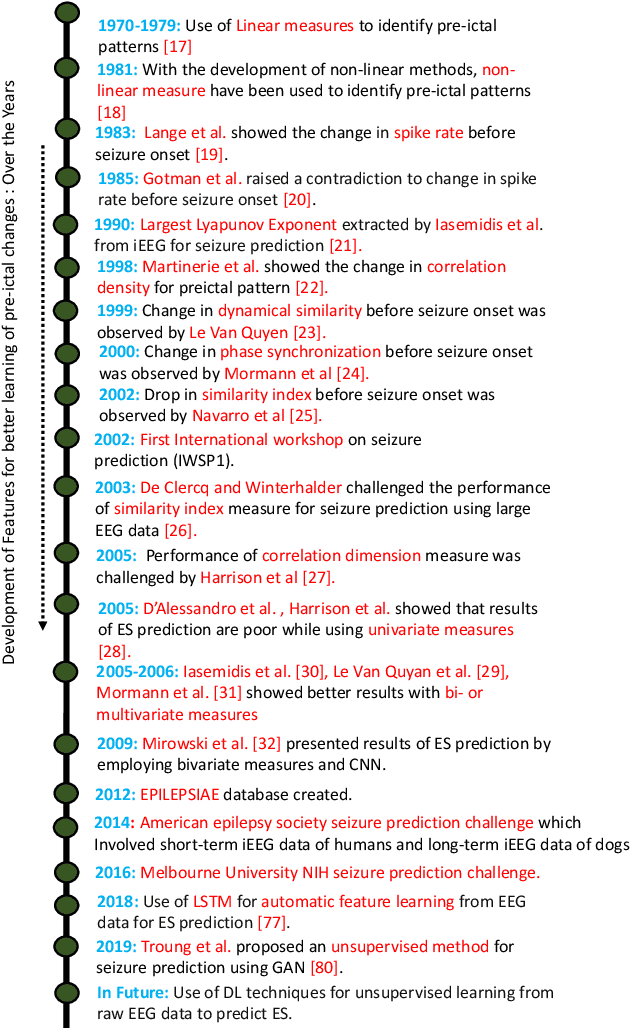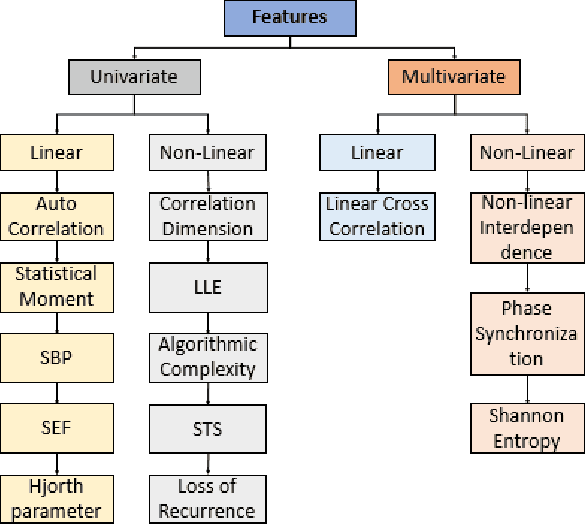Patrick Kwan
Privacy-preserving Early Detection of Epileptic Seizures in Videos
Sep 15, 2023Abstract:In this work, we contribute towards the development of video-based epileptic seizure classification by introducing a novel framework (SETR-PKD), which could achieve privacy-preserved early detection of seizures in videos. Specifically, our framework has two significant components - (1) It is built upon optical flow features extracted from the video of a seizure, which encodes the seizure motion semiotics while preserving the privacy of the patient; (2) It utilizes a transformer based progressive knowledge distillation, where the knowledge is gradually distilled from networks trained on a longer portion of video samples to the ones which will operate on shorter portions. Thus, our proposed framework addresses the limitations of the current approaches which compromise the privacy of the patients by directly operating on the RGB video of a seizure as well as impede real-time detection of a seizure by utilizing the full video sample to make a prediction. Our SETR-PKD framework could detect tonic-clonic seizures (TCSs) in a privacy-preserving manner with an accuracy of 83.9% while they are only half-way into their progression. Our data and code is available at https://github.com/DevD1092/seizure-detection
Machine Learning for Predicting Epileptic Seizures Using EEG Signals: A Review
Feb 04, 2020



Abstract:With the advancement in artificial intelligence (AI) and machine learning (ML) techniques, researchers are striving towards employing these techniques for advancing clinical practice. One of the key objectives in healthcare is the early detection and prediction of disease to timely provide preventive interventions. This is especially the case for epilepsy, which is characterized by recurrent and unpredictable seizures. Patients can be relieved from the adverse consequences of epileptic seizures if it could somehow be predicted in advance. Despite decades of research, seizure prediction remains an unsolved problem. This is likely to remain at least partly because of the inadequate amount of data to resolve the problem. There have been exciting new developments in ML-based algorithms that have the potential to deliver a paradigm shift in the early and accurate prediction of epileptic seizures. Here we provide a comprehensive review of state-of-the-art ML techniques in early prediction of seizures using EEG signals. We will identify the gaps, challenges, and pitfalls in the current research and recommend future directions.
 Add to Chrome
Add to Chrome Add to Firefox
Add to Firefox Add to Edge
Add to Edge